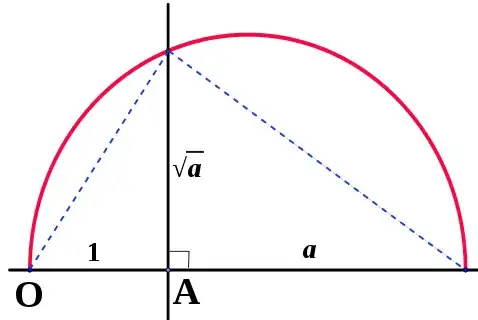Is $2^{1/4}$ (fourth root of two) constructible using only a straight edge and compass? How would you construct it?
I understand that a number is constructible if it can be done in a finite number of step in a field.
I believe it is constructible because the degree of $Q(2^{\frac{1}{4}}$ over the rationals is $[Q(2^{1/4})): Q] = 4$, which has the form $2^k$. The degree is 4 because a basis for $2^{1/4}$ is $${1, 2^{1/4},2^{1/2}, 8^{1/4}}.$$ Is this reasoning correct?
If it is constructible, do I need to find the four roots of unity and multiple each by $2^{1/4}$? And then how do I proceed from there?
